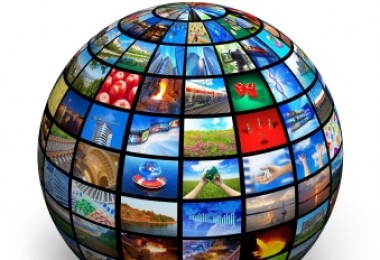Translation Romani has decided to maintain use of the word Romani in all language versions of this website, inclusively and in reference both to the language and people of all the diverse ethnic communities throughout the world, i.e. Roma, Sinti, Manuš, Calé, Romanichal, Kalé, and many others. Please read the important notes from our translators for explanations and other translations currently in use locally, nationally or regionally.
Close this box.
Signs of localization are literally everywhere, even if ubiquitous and transparent, as contemporary technologies transform our daily professional, personal and social lives around the globe. For example, ATM networks, cell phones, airline companies globally all provide services through localized applications. The accelerating video and online game sector worldwide continues to depend on game localization for its revenues. The latest versions of MS Office and Windows are currently localized into 96 languages. The social networking site Facebook, with up to 500 million active users, has been localized into at least 70 languages, assisted by 300,000 user-volunteer translators. In February 2011, Twitter launched the Twitter Translation Center to crowdsource translation into multiple languages. The online encyclopedia Wikipedia is available in over 200 languages. Statistics for the multilingual Internet are just as staggering. Worldwide Web Internet usage grew 444.8% from 2000-2010, at specific rates of 2,357% in Africa, 1,825% in the Middle East, and 1,032% in Latin America / Caribbean. Google, ranked as the world`s most widely deployed search property, currently has its search engine interface localized in at least 100 languages. Cognizant of the importance of translation and localization in today`s world, Google has also developed the Translator Toolkit and Google Translate MT online to assist users in multilingual communication.
Technically speaking, "localization" refers both to the specific tasks of linguistic, cultural and technical adaptation of digital content, and to the professional industry in general, which encompasses four main overlapping areas of expertise, i.e. globalization, internationalization, localization, and translation, or GILT for short. G11N assesses commercial prospects and legal constraints with regard to launching a digital content-based product or service outside its country of origin. I18N prepares this digital content, first by separating it from its programming code in order to avoid having to redesign the source program later, and then often by writing the source (linguistic) content in controlled language to facilitate subsequent translations. L10N procedures carry out all facets of linguistic, cultural and technical adaptation, of which T9N is a crucial part. Since its materialization in the 1980s, the localization industry has passed through four main phases, i.e. the localization of software, websites, games, and mobile devices. All of these phases have been dependent on the evolution of technologies in general. While early localization projects were mostly confined to proprietary and corporate domains, they are now just as visible in government, open source, non-profit and humanitarian initiatives.
Localization is typically managed by project managers, who are ultimately indispensable for the success of a localization project. They are responsible for client account relations and for coordinating a project-specific team of (usually outsourced) vendors: programmers, desktop publishers, website designers, localization engineers, terminology managers, translators, revisers (editors) and quality control testers. Localization engineers have an important technical role to play. They automate procedures when possible, and repair or modify code to accommodate diverse character encoding and format changes (such as currency, dates and numbers) for different languages and cultures. Technologies are a crucial asset. Computer-assisted translation (CAT), localization, and machine translation (MT) tools, as well as project management and tracking applications, are used to varying degrees for carrying out localization projects. The professional localization world continues to evolve steadily, at the pace of emerging technologies, constantly challenged by the need to develop standards and new tools and expertise for handling all types of digital content (written or oral) in preparation for their new forms in translation. As more languages and cultures gain representation online, distinct localization trends emerge. Crowdsourcing and volunteer translation are currently of interest to the professional industry, academics, and think-tank organizations. Finally, since 1987 the journal Multilingual has served as one of the main professional sources on globalization, internationalization, localization and translation technologies.
References:
Chandler, Heather M. (2004), The Game Localization Handbook, Florence, KY (U.S.): Charles River Media.
Chandler, Heather Maxwell and Stephanie O'Malley Deming (2011), The Game Localization Handbook, 2nd Edition, Burlington, MA (U.S.): Jones & Bartlett Learning.
Dunne, Keiran J. (ed), Perspectives on Localization. ATA Scholarly Monograph Series XIII, Amsterdam / Philadelphia: John Benjamins Publishing Company, 2006.
Dunne, Keiran J. and Elena S. Dunne (eds), Translation and Localization Project Management: The art of the possible. ATA Scholarly Monograph Series XVI, Amsterdam / Philadelphia: John Benjamins Publishing Company, 2011.
Esselink, Bert (2000), A Practical Guide to Localization, Amsterdam / Philadelphia: John Benjamins Publishing Company.
Gambier, Yves and Luc Van Doorslaer (eds), Handbook of Translation Studies. Vol. 1, Amsterdam / Philadelphia: John Benjamins Publishing Company, 2010. Also online.
Localization World -- yearly conferences in Europe and in the Americas.
Pym, Anthony (2004), The moving text: localization, translation, and distribution, Amsterdam / Philadelphia: John Benjamins Publishing Company.
Quah, C. K. (2006), Translation and Technology, Basingstoke: Palgrave Macmillan.
Schäler, Reinhard (ed), Localisation Focus. The International Journal of Localisation. Special CNGL Edition, 8 (1), Limerick: Localisation Research Centre, 2009.
Souphavanh, Anousak & Theppitak Karoonboonyanan, Free/Open Source Software "Localization", available at Wikibooks.

Kai? (Kalderash)
Kaj? (Gurbeti)
Kaj? (Lovari)
Kaj? (Xoraxane)


